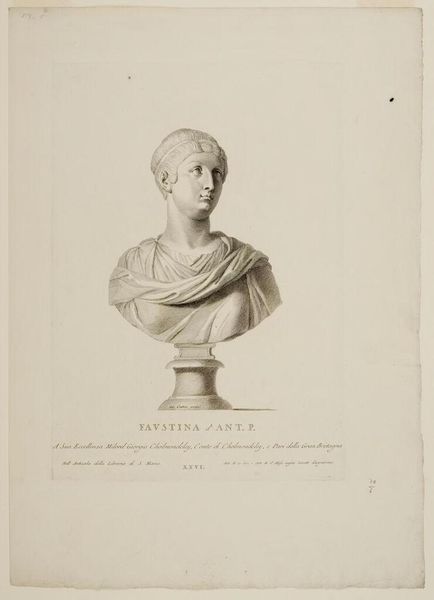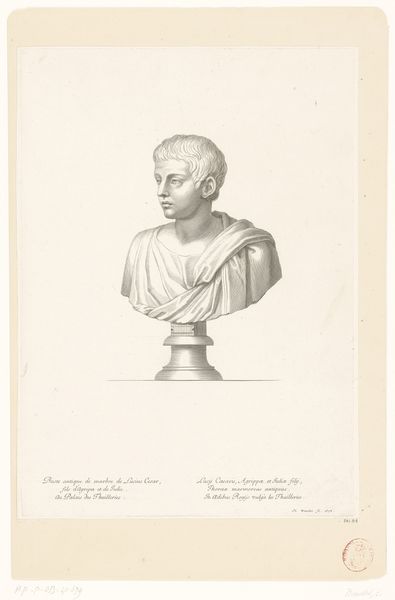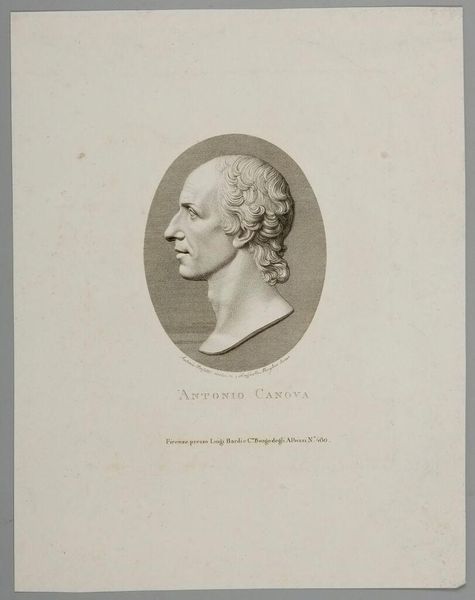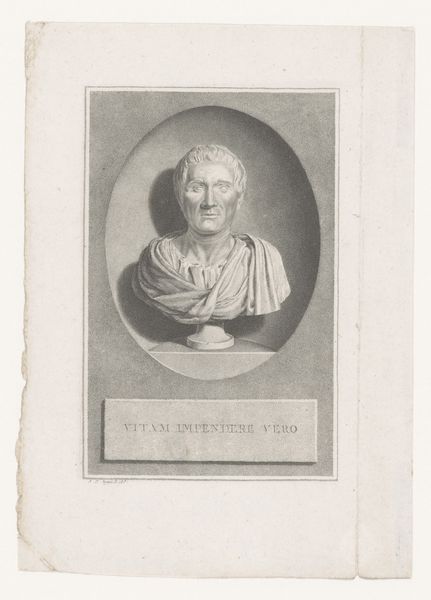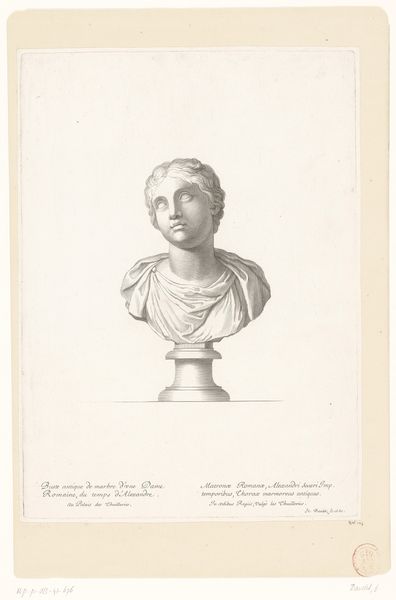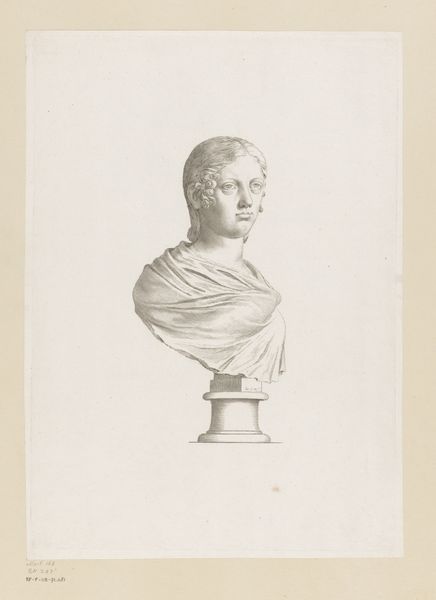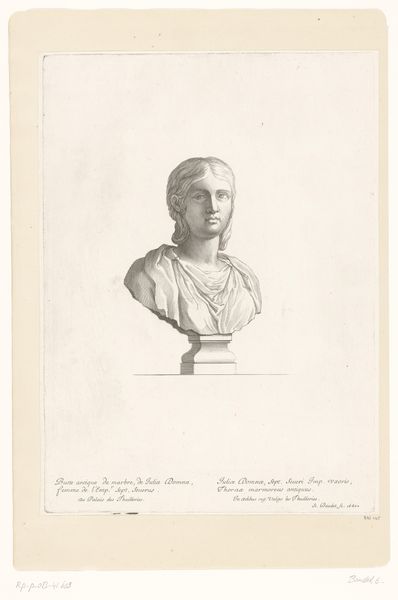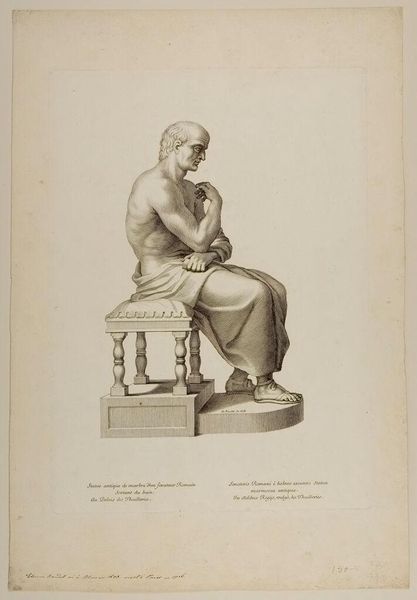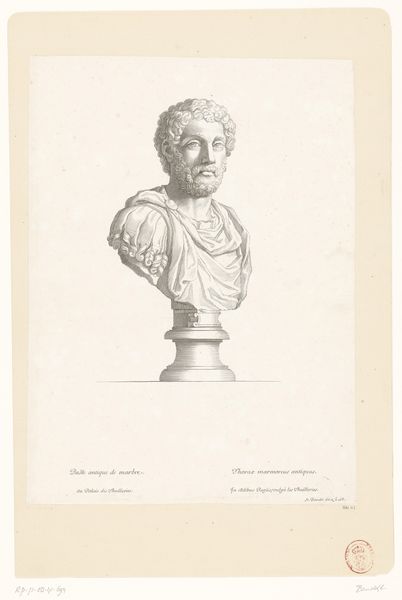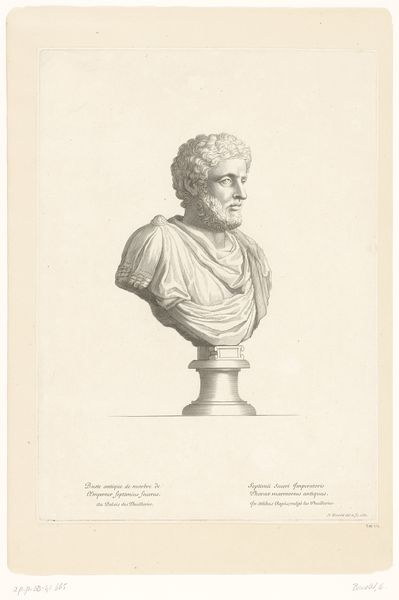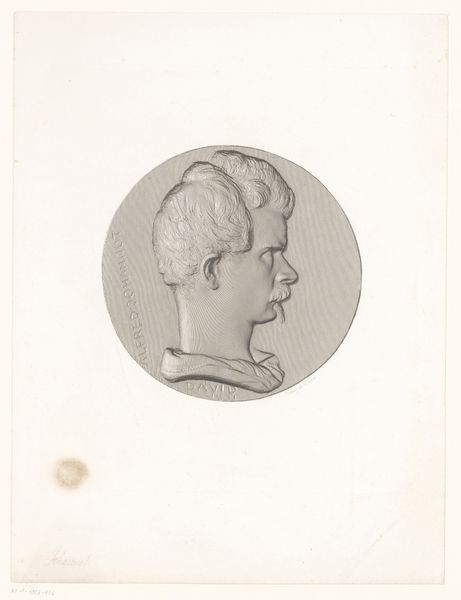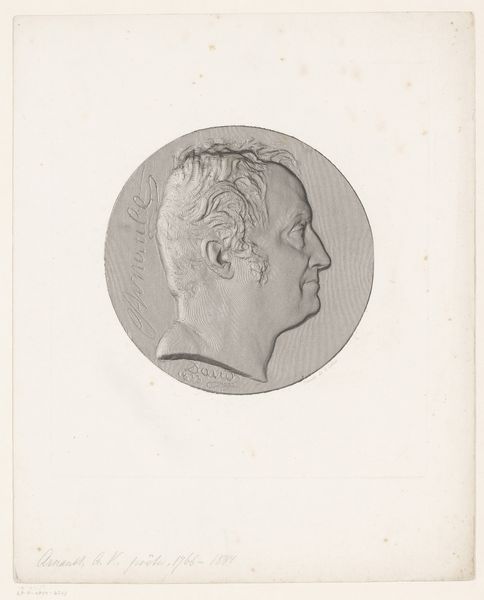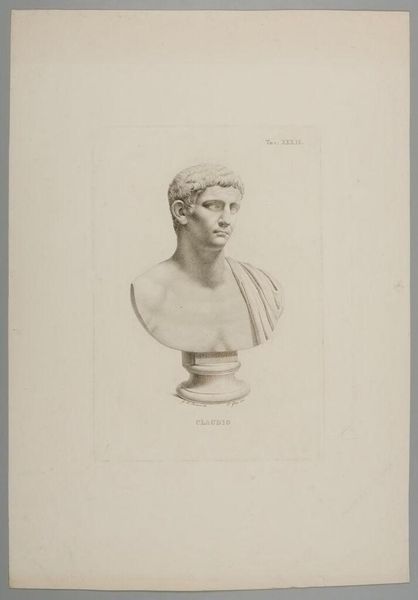
Copyright: CC0 1.0
Curator: Here we have Giovanni Cattini's rendering of "Caracalla," held in the Harvard Art Museums. What strikes you first about this piece? Editor: The starkness, it seems almost austere. The way the lines define the marble, or the idea of marble, feels very deliberate. Curator: It's interesting you say that. Cattini was working within a tradition of disseminating classical imagery. Prints like this one played a crucial role in shaping perceptions of antiquity. Editor: Right, and the choice of printmaking itself is significant. It allows for mass production, democratizing access to these supposedly high-art representations of power. The image becomes a commodity. Curator: Precisely. And consider Caracalla himself, a controversial figure whose legacy was shaped by the elite narratives that followed. This image reinforces a certain kind of imperial authority. Editor: It makes me wonder about the labor involved in both the creation of the original sculpture and this reproduction. Who were the artisans, the draftsmen, behind these images of emperors? Curator: That's an excellent point. It brings to light the often-invisible hands that shape our understanding of history. Editor: Looking at it again, I see the care in rendering the folds of the drapery, it is not mass production if there is such details. Curator: A fitting reminder of the complexities embedded in even seemingly simple images. Editor: Indeed, there's so much more beneath the surface.
Comments
No comments
Be the first to comment and join the conversation on the ultimate creative platform.

